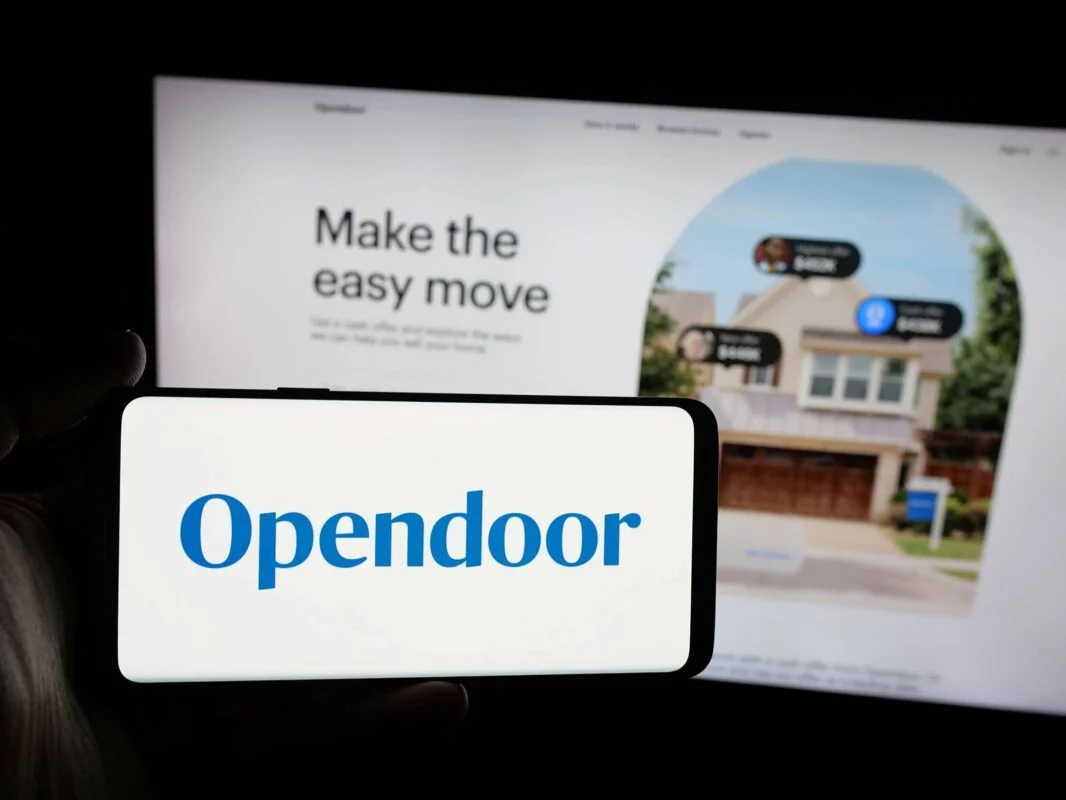TLDR
- Opendoor stock jumped 14% on Friday as 30-year mortgage rates fell to 6.19%, the lowest level in over a year
- Jane Street Group disclosed a 5.9% stake in the company, holding more than 44 million shares
- Morgan Stanley raised its price target from $2 to $6, tripling its previous outlook
- The stock has surged 342% year-to-date, recovering from $0.50 in June to the $8-10 range
- Call option volumes reached 340,089, four times the expected amount, ahead of the November 6 earnings report
Opendoor Technologies stock climbed 14% on Friday as multiple factors converged to push shares higher. The real estate technology company has now posted gains of over 8% during the past week.
Opendoor Technologies Inc., OPEN
The rally comes as 30-year mortgage rates dropped to 6.19%. This marks the lowest level in over a year.
Lower borrowing costs typically increase home-buying activity. This directly benefits Opendoor’s business model of buying and reselling homes.
Federal Reserve Chair Jerome Powell hinted that rate cuts could arrive in early 2026. His comments about softening labor market conditions helped spark renewed optimism in the housing sector.
Jane Street Group disclosed a 5.9% stake in Opendoor. The position equals more than 44 million shares.
The stock jumped nearly 10% following the disclosure. Institutional backing of this size often signals to retail investors that professional money managers see value.
Morgan Stanley raised its price target from $2 to $6. The tripled target reflects changing sentiment about the company’s prospects as housing conditions improve.
Call option volumes reached 340,089 on Friday. This represents four times the expected amount.
The surge in bullish options activity suggests traders expect continued upward movement. Investors are watching closely ahead of the November 6 earnings report.
New Leadership Takes the Reins
The company announced new leadership appointments to guide its strategic reset. Co-founder Keith Rabois returned as board chair while former Shopify executive Kaz Nejatian took over as CEO.
What started as a meme-stock rally based on comparisons to Carvana may be turning into something more. The new leadership team plans to present a refreshed strategic roadmap during the Q4 earnings call in November.
The stock has posted a 342% gain year-to-date. Current market capitalization stands at $5.02 billion.
The recovery saw shares climb from $0.50 in June to over $10 in early October. After reaching those highs, the stock entered a pullback phase as traders took profits.
The shares found support around the 50-day moving average. A bullish doji pattern formed midweek, setting up Friday’s rally.
Housing Market Dynamics at Play
Existing home sales have been stuck around 4 million annually for the last three years. This represents a 30% drop from pre-pandemic levels.
The spike in mortgage rates created a “lock-in effect” across the market. Americans who bought or refinanced homes during the pandemic are reluctant to give up those low-rate mortgages.
If mortgage rates fall substantially, more prospective homebuyers and sellers should enter the market. More inventory gives Opendoor more opportunities to buy homes and more potential transactions.
A more active housing market could also decrease the amount of time that Opendoor keeps homes on its books. This would save the company money on holding costs.
Opendoor benefits from lower interest rates in another way too. The company uses the debt market to fund its home purchases.
It finished the second quarter with $1.2 billion in asset-backed debt. It also held $1.5 billion in real estate inventory.
The company reported quarterly revenue of $5.15 billion. However, margins remain thin with a gross margin of 8.1% and a net loss margin of negative 5.89%.
Operating cash flow reached $823 million. This shows strong internal cash generation despite the net losses.
The current ratio stands at 4.4. This indicates healthy short-term financial positioning.
Debt levels remain elevated with a debt-to-equity ratio of 3.46. Return on equity sits at negative 39.35%, reflecting ongoing profitability challenges.
Home prices present a complex picture for the company. The median sales price for a home in July 2025 was $422,400, according to the National Association of Realtors.
The S&P CoreLogic Case-Shiller U.S. National Home Price Index reached 331.5 as of June. This represents a 50% increase from pandemic-era levels after a brief pullback in 2022.
Premarket trading on Friday showed a 7% surge before the opening bell. The momentum carried through the regular session as housing sector optimism spread across related stocks.






